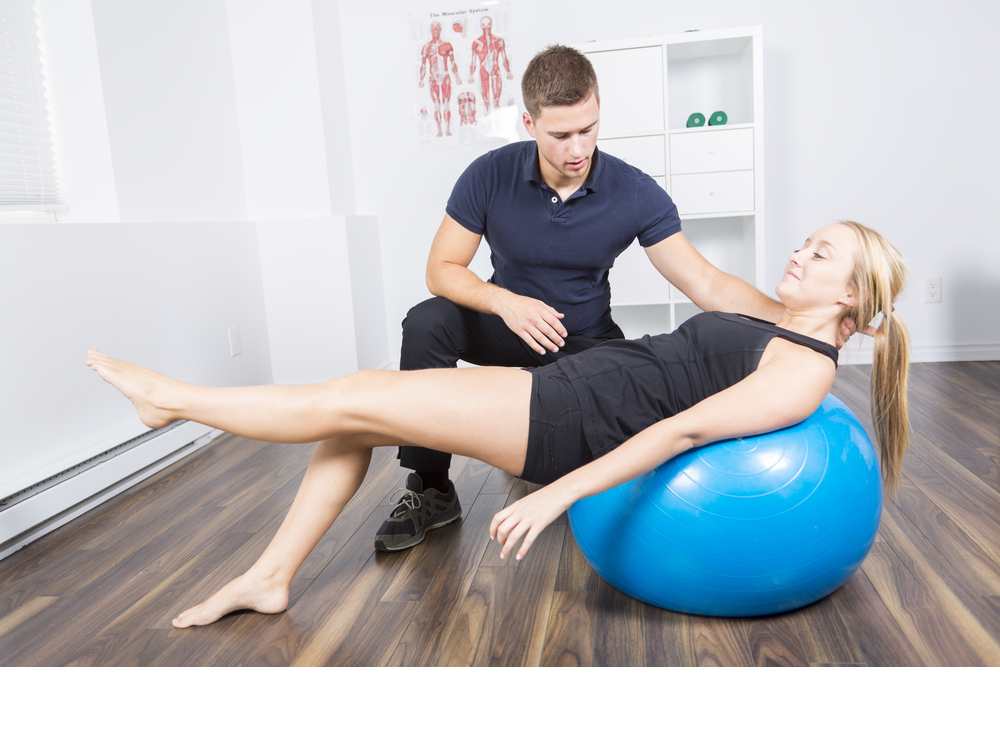 When your joints aren’t functioning properly, you might end up dealing with pain and discomfort. Major joints like your shoulders, elbows, wrists, hips, knees, and ankles all support various movements you depend on to go about your daily routines. Your spine is also made up of joints known as vertebrae that provide stability and flexibility for your upper body. You can get joint pain anywhere, but the location will determine other types of symptoms you might experience, too. One frustrating but common symptom that can accompany joint pain is joint instability. It might seem like your joint is out of place or is moving too smoothly, leaving you feeling unstable. Joint instability in your upper body can make certain actions like picking up or grasping things difficult, while joint instability in your lower half might leave you feeling unstable on your feet. Here’s everything you need to know about joint instability, including common causes and a wide variety of treatment options.
When your joints aren’t functioning properly, you might end up dealing with pain and discomfort. Major joints like your shoulders, elbows, wrists, hips, knees, and ankles all support various movements you depend on to go about your daily routines. Your spine is also made up of joints known as vertebrae that provide stability and flexibility for your upper body. You can get joint pain anywhere, but the location will determine other types of symptoms you might experience, too. One frustrating but common symptom that can accompany joint pain is joint instability. It might seem like your joint is out of place or is moving too smoothly, leaving you feeling unstable. Joint instability in your upper body can make certain actions like picking up or grasping things difficult, while joint instability in your lower half might leave you feeling unstable on your feet. Here’s everything you need to know about joint instability, including common causes and a wide variety of treatment options.
What Is Joint Instability?
A joint refers to a part of the body where two or more bones meet. Muscles, ligaments, and tendons are connective tissues that provide stability and support to the joint. Cartilage covers the surface of bones inside a joint, which helps support smooth movements. Other parts of a joint help lubricate joints and help cushion the joint from dealing with friction. Instability in one or more joints occurs when muscles, ligaments, or other soft tissues that support a joint start to weaken. The human body has over 300 joints that allow you to move. Some joints allow for a lot of movement, while others do not. For example, immovable joints refer to when two or more bones are held together tightly, and no movement occurs. Joints in the skull, known as sutures, are an example of immovable joints. Joints in the spine are slightly movable, which means they allow for limited mobility of vertebrae. Most joints in the body are freely movable, which means their purpose is to support motion.
Types of Freely Movable Joints
Here are the six main types of freely moving joints in the human body:
Ball and Socket
A ball and socket joint features one bone with a rounded, ball-shaped end that sits inside a cup or socket of another bone. Ball and socket joints allow for a wide range of motion and include shoulder and hip joints. Think of how you can rotate your arm up and around, all thanks to your shoulder joint.
Condyloid
A condyloid joint allows movement but no rotation, like the joints in your jaw or fingers. If you raise your pointer finger, you will notice it can bend at the knuckle but cannot rotate from side to side. Similarly, your jaw joint only allows you to open and close your mouth and adjust the alignment of your teeth.
Gliding
A gliding joint, also known as a plane joint, has a smooth surface so that the bones and supportive tissues can twist and turn, slipping over one another gently. However, gliding joints do not have as much range of motion as ball and socket joints. The wrist joint is a good example of a gliding joint because you can roll your wrist in an up and down or circular motion.
Hinge
A hinge joint gets its name from the hinge on a door, where the only two directions available are open and close. With a hinge joint, the bones allow for movement along a straight plane where you can open and close. The elbows and knees are both hinge joints, and you can only bend and straighten these joints in one direction.
Pivot
A pivot joint refers to a type of joint where one bone swivels or pivots around the ring of another bone. The joint between the first two vertebrae in your neck is an example of a pivot joint because you have a wider range of motion in turning your head in different directions thanks to this joint.
Saddle
A saddle joint allows for movement that goes back and forth or side to side, but has no rotation. The most common example of a saddle joint is your thumb. Unlike your other fingers, your thumb joint allows for a different type of mobility.
What Causes Joint Instability?
Joint instability can occur for several different reasons. Here are some common causes of joint instability and what other symptoms you might experience:
Acute Injuries
 Acute injuries refer to sudden injuries, like if you get hurt in a car accident or while playing sports. Slip and fall accidents are also common, especially in older adults, and can lead to acute joint injuries like hip dislocation. Nearby muscles, ligaments, or tendons can also become strained or sprained from a sudden accident, which can leave your joint feeling weak and unstable.
Acute injuries refer to sudden injuries, like if you get hurt in a car accident or while playing sports. Slip and fall accidents are also common, especially in older adults, and can lead to acute joint injuries like hip dislocation. Nearby muscles, ligaments, or tendons can also become strained or sprained from a sudden accident, which can leave your joint feeling weak and unstable.
Overuse Injuries
Repetitive movements, whether you perform these while playing a sport or for your job, can put a lot of pressure on your joints over time and lead to an overuse injury. A common type of overuse injury is known as tendonitis, which leads to inflammation, swelling, and irritation of soft tissues that support your joints. When a tendon or other tissue becomes inflamed, it can make movements uncomfortable and painful. Repeated movements like throwing a baseball or swimming can put a lot of pressure on the same joints.
Joint Dislocation
A dislocation refers to when the bones in a joint get forced out of their normal positions. This is more likely to occur due to a sudden or acute injury, like a hard blow to the shoulder or knee. A joint dislocation will cause different symptoms and issues depending on what type of joint is affected. Sometimes a joint dislocation can cause instability, while other times, a dislocation could result in full immobilization until you get medical care.
Soft Tissue Damage
Sprains and strains are common soft tissue injuries that can impact the healthy functioning of joints. Sprains affect tissues that connect two bones together, like if ligaments that support your ankle become stretched or torn from rolling your ankle and lead to an ankle sprain. A strain refers to when tissues that connect a muscle to a bone become stretched or torn.
Arthritis
Arthritis causes inflammation in the joints that can lead to pain, stiffness, instability, and reduced range of motion. The most common type of arthritis is osteoarthritis, which refers to how general wear and tear on the body impacts your joints. Other less common types of arthritis that can affect various joints include rheumatoid arthritis and psoriatic arthritis.
What Does Joint Instability Feel Like?
How do you know when your joint pain and discomfort is something to worry about? You might not think to call it joint instability, but here’s what an unstable joint can feel like and other symptoms you might notice.
Painful Movements
If one or more joints become unstable, whether due to a recent injury or a health condition like arthritis, you may notice an increase in joint pain, too. Joint instability can make common, everyday movements more painful and uncomfortable. For example, you might feel hesitant to put your full weight on your knee or ankle because it feels unstable and painful when you try to walk.
Reduced Range of Motion
Joint instability can also occur with a reduced range of motion. When the muscles and tissues that support your joint weaken, you might start to notice you have less range of motion than you did before. For example, joint instability and weakness around your shoulder can make it difficult to reach up and grab something off a high shelf.
Popping Joints
You may hear your joint making funny grinding or popping sounds when you move certain ways. An unstable joint will not glide as smoothly, which can lead to popping or crackling sounds. This could be caused by cartilage that has broken down, making bones rub against one another.
Hypermobility
Some people experience hypermobility, which means their joints can rotate or extend beyond the normal range of motion without pain or issue. Examples of hypermobility include being double-jointed or loose joints. Sometimes you can have hypermobility without experiencing any issues. Other times, hypermobile joints can leave you feeling like your joints could easily slip out of place.
How Is Joint Instability Diagnosed?
A doctor will want to locate the source of your joint instability with a physical examination and to hear more about the symptoms you’ve been experiencing. Let your doctor know when you first noticed feeling like your joint was unstable, any pain and discomfort, or other ways this may have impacted you. If you were recently injured, be sure to let your doctor know. This includes a recent car accident, sports injury, or slip and fall. You might not even realize the connection between a recent incident and your joint instability until your doctor looks into it further with you. They may also use diagnostic imaging tools like an X-ray or CT scan to get a better picture of what’s going on in and around the joint. An X-ray will provide your doctor with a quick visualization of the bones in the affected joint and might clearly show a dislocation or fracture. A CT scan provides a bit more detail, including images of muscles, ligaments, tendons, and other soft tissues in and around the joint. These diagnostic imaging tools can also be used to rule out other types of injuries or health conditions to ensure a proper diagnosis.
What Are Treatment Options for Joint Instability?
 The treatment options for your joint instability will depend on what is causing all your symptoms. For example, treatment for a dislocated hip will be different than treatment for an injured shoulder. The type and severity of your injury or health condition will also impact the type of treatment options available to you. Here are some examples of how your doctor may recommend you treat joint instability:
The treatment options for your joint instability will depend on what is causing all your symptoms. For example, treatment for a dislocated hip will be different than treatment for an injured shoulder. The type and severity of your injury or health condition will also impact the type of treatment options available to you. Here are some examples of how your doctor may recommend you treat joint instability:
Home Remedies
Joint instability caused by a sudden injury can lead to pain, swelling, and inflammation. Applying ice to the area can help reduce these symptoms and taking anti-inflammatory medications may also help. You can also apply heat to stiff, sore joints, especially if you experience joint instability caused by overuse or a condition like arthritis.
Immobilization
Using a brace or splint can help stabilize and immobilize the joint while it heals. You may also use a brace or other type of immobilization device while performing certain tasks or activities to ensure your joint can function properly and doesn’t get overstretched or overextended. A temporary sling may also help restrict your movements after an acute joint injury.
Chiropractic Care
Chiropractic care provides you with an all-natural and drug-free treatment option for dealing with joint instability. Chiropractors take a holistic approach by looking at how your whole body is impacted by joint instability. Chiropractors use therapeutic techniques like chiropractic adjustments to help realign joints and restore healthy functioning.
Physical Therapy
Physical therapy offers you a chance to take an active role in your recovery process for joint pain and instability. Your physical therapist may recommend a certain combination of stretches and exercises to help you strengthen nearby muscles and improve your overall mobility in the area. Physical therapists also use techniques like therapeutic massage and soft tissue mobilization to help you heal.
Don’t let joint instability or discomfort keep you from going about your day or participating in the activities you love! Visit AICA Orthopedics in Lithia Springs to learn more about how our team of doctors can help you with all kinds of joint issues. From car accident injuries to arthritis, our doctors will provide you with a personalized plan of care that addresses your specific symptoms and goals for treatment. Our Lithia Springs clinic features a convenient location where you can meet with an orthopedic doctor, neurologist, chiropractor, and physical therapist all in one place! Call or schedule an appointment today and get started on experiencing lasting relief from joint pain and instability.
